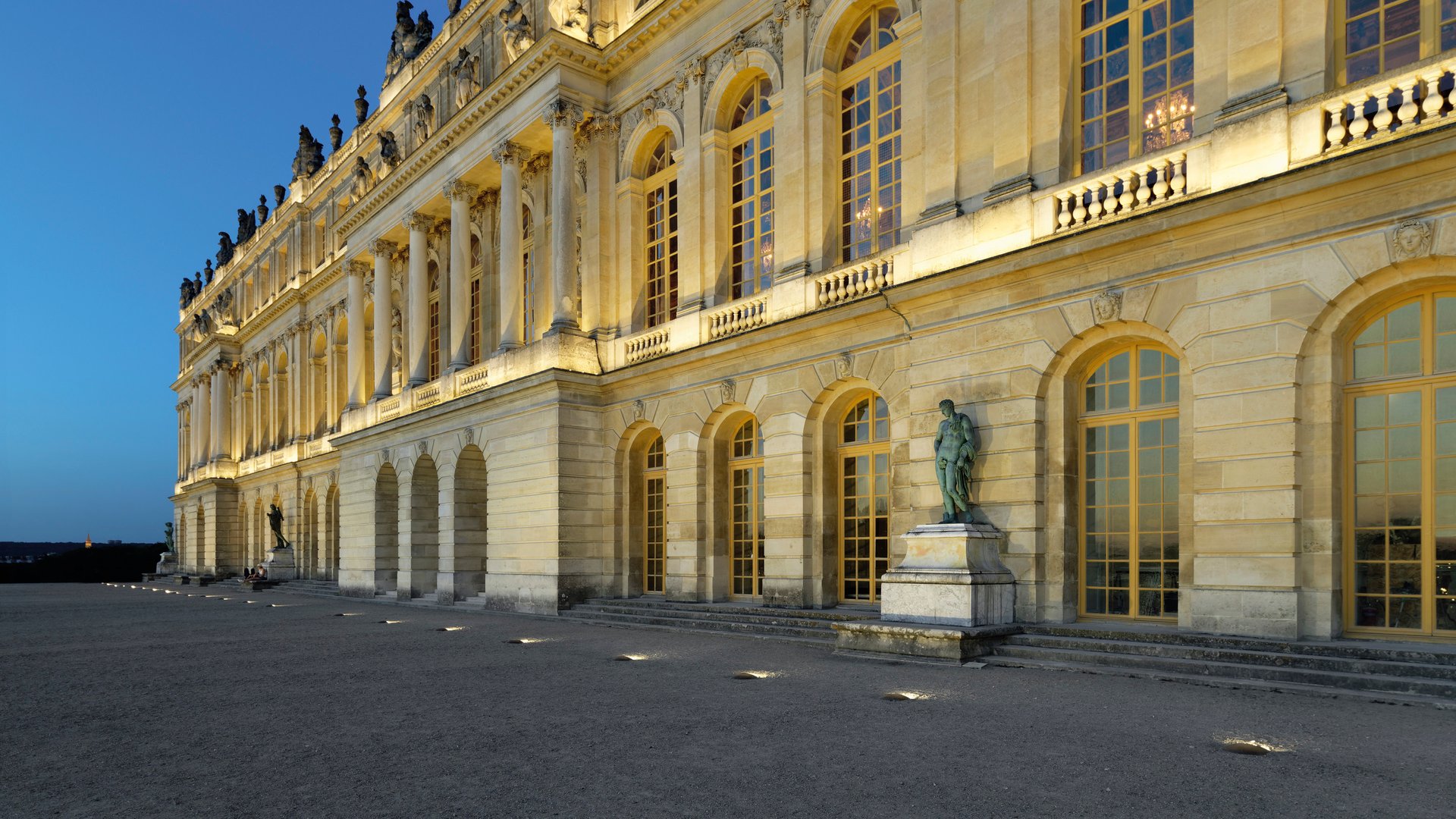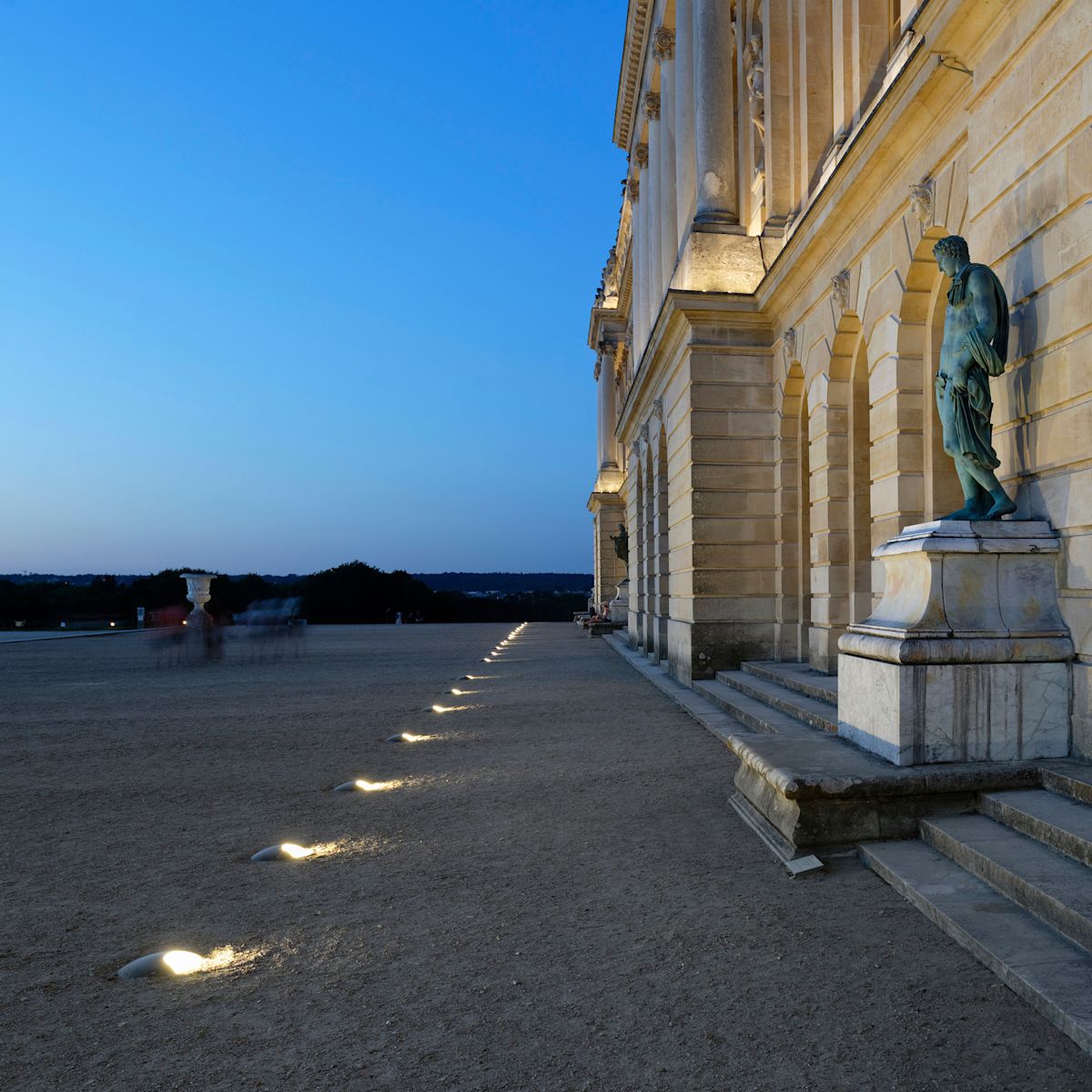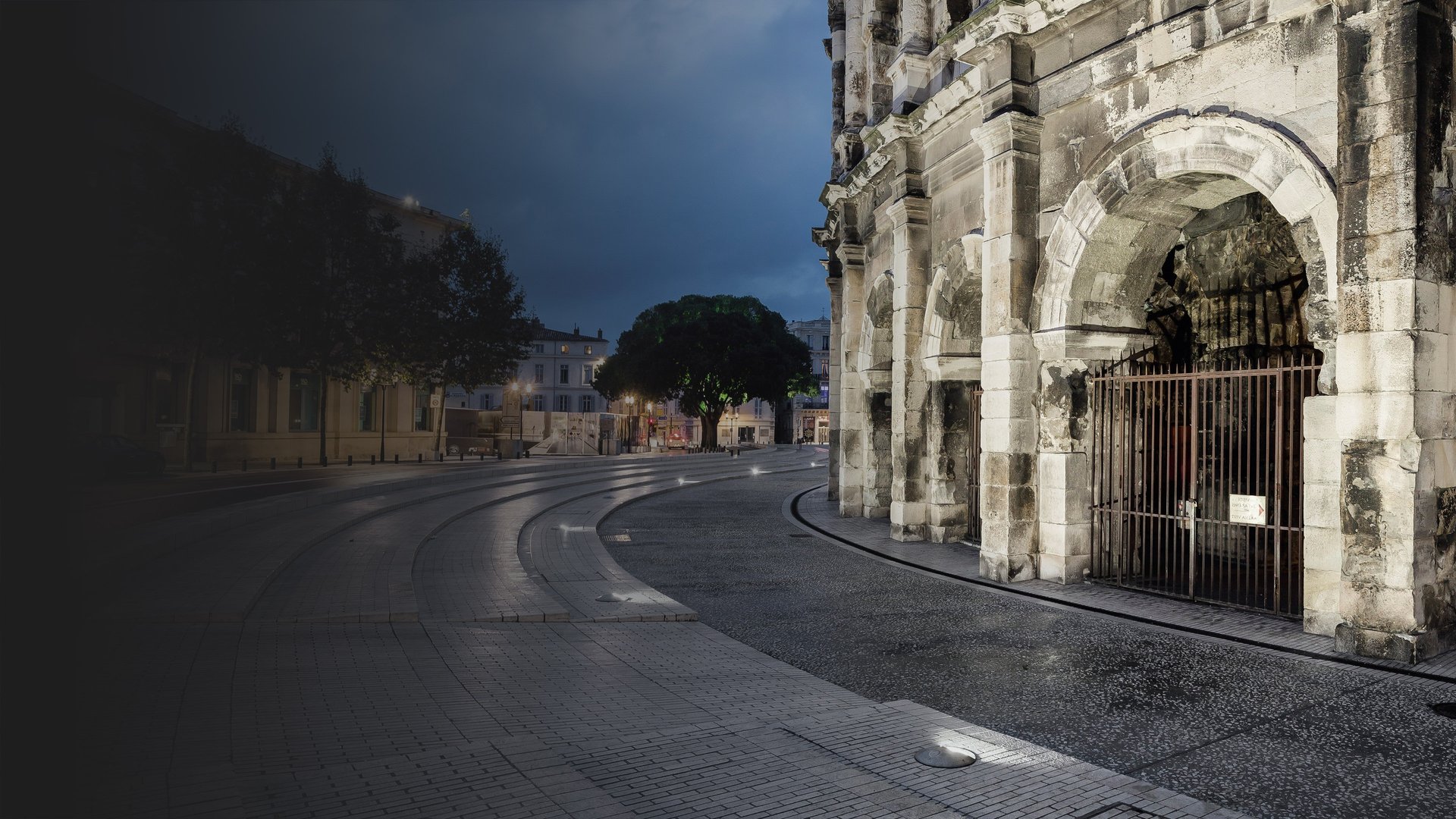

Et av de største palasskompleksene i Europa og samtidig en av de mest historiske bygningene på kontinentet skaper en helt spesiell magi også langt utenfor Frankrike.
Målet med lysdesignet for barokkbygningen var å skape en sublim langdistanseeffekt for Slottet i Versailles, som på det bredeste strekker seg mer enn en halv kilometer, selv i mørket.
Frem til 1800-tallet fungerte UNESCOs verdensarvliste som forbilde for utallige slottsbygninger. Spesielle nedgravde LED-markarmaturer fra BEGA bidrar til den verdige iscenesettelsen. To nesten identiske armaturer, som knapt kan skilles fra utsiden og skaper et harmonisk helhetsbilde, tar på seg svært forskjellige belysningsoppgaver for slottet og parkanleggene.
Disse spesialdesignede Innfelte lyskastere er en integrert del av lyssettingen til de vidstrakte parkanleggene med deres skulpturer og planter. Spesielle reflektorer og en resulterende ekstra smalstrålende lysfordeling brukes til å iscenesette detaljene til en rekke skulpturer, og integrerer disse statuene på en hensynsfull måte i hageanlegget og blant de kunstferdig beskjærte plantene.



Avoiding glare in urban environments
To belysningskonsepter for jevnt lys, som tar for seg beboernes behov og gir insektbeskyttelse
Lighting concepts in urban spaces can be realised for spatially limited areas, as well as for structures with larger dimensions:
In addition to the task of appropriately staging the illumination, the conditions of the immediate surroundings must be taken into account. An essential requirement here is to prevent glare. Light shielded upwards has proven to be particularly insect-friendly as well. The right choice of luminaires and effective accessories ensures satisfactory results for lighting designers and local residents alike.
The light stagings presented here follow the main brief of illuminating with uniform light. They do, however, use different concepts to match local conditions, while achieving outstanding lighting results for the respective projects. Thanks to The sprawling dimensions of the amphitheatre in Nîmes allowed the use of in-ground luminaires as wall washers for its illumination. The luminaires were placed close to the structure, so that viewers find themselves behind the light source to avoid glare. The uniform light without distracting light cones in the lower area stages the 2000-year-old bricks, with their varied colour shading, to perfection.




For the Porta Nigra in Trier, glare-free illumination was an important planning factor. The luminaires had to be installed at a distance from the structure and above the eyeline of viewers, as they would usually be located in front of the luminaires. This placement prevents glare. High-performance floodlights with shields and louvres create directed light for the uneven shape of the building in such a way as to achieve a very uniform illumination. Secondly, virtually every beam of light is captured and targeted precisely to exactly where the light is needed.
In Trier, precisely aligned luminaires with additional light-directing shields and louvres are installed on cross beams to avoid glare for visitors and residents by the Porta Nigra. The light distribution additionally addresses the concerns of insect protection.



